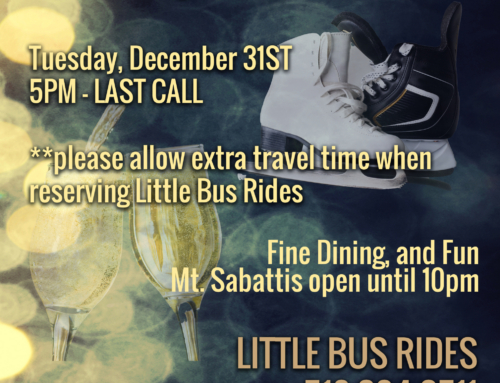Moose sightings have become more and more frequent in and around the Long Lake, Raquette Lake and generally the central Adirondack region, particularly this May. It seems that almost daily someone is spotting a moose and sharing the images on social media.
To our fans – Thank you, we always appreciate when you share content with us so please, feel free to keep sharing! Here’s a link to our Long Lake Facebook Page and to the Raquette Lake Facebook Page. And to those of you clamoring for exactly the best places to spot a moose in our area, we try to avoid divulging specific locations as the moose move around hunting for their food and we don’t want to wreak havoc on their habitat. Moose like boreal forests, they eat vegetation and they can swim. That pretty much sums up the description of any location in the Adirondacks, we just happen to have had more and more sightings in the region recently.
 “
“So that’s why Adirondackers get excited about “the elusive moose.” Regular moose sightings have been seemingly rare, until this spring.
When I was a kid, at our family camp on the north end of Long Lake, we had a huge mounted moose head looming from the camp wall keeping his eye on us. In my wild imagination, I always pictured the rest of the moose’s body was actually standing outside of the house and he had just stuck his head in the side of the building to keep an eye on us. That would have been a very tall moose if that was the case. The fascination I had and the mythical importance of the moose was long embedded in me by my father who had a love and passion for the Adirondacks and was humbled by mother nature. And boy oh boy, he really really wanted to see a Moose. I mean, really hoped and dreamed to one day see a moose in the Adirondacks.
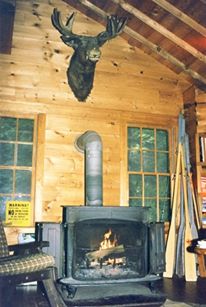
Well the giant moose head mounted on our camp wall was originally from Maine, not even a true Adirondack moose. Sadly for my Dad, he never had the chance to see the moose, but lucky for me, I had my very own moose encounter in April 2011. I along with my long-time handy side-kick, Opie, of Parks & Recreation, were able to track the moose as he wended through the Long Lake Central School Parking Lot before making his way to the Long Lake Ball field where it proceeded to stick it’s tongue out at me before it hopped in the water and swam across the lake, heading towards Tupper was our guess.

photo by Alexandra Verner- Moose seen on the Long Lake Ball Field
So, it is exciting for us Long Lakers to see moose return to the Adirondacks. But with a return of the Moose and a curious population anxious to spot one for themselves, we thought it important to highlight some precautions so visitors to our area don’t disrupt the moose habitat or put themselves in danger by getting too close.
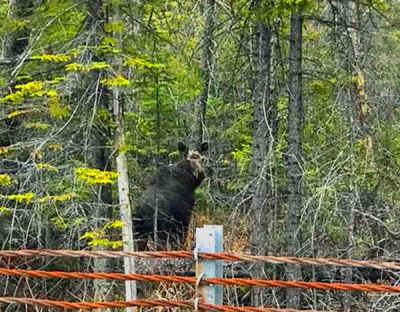
Steven LaPrarie took this photo on his way to work in Raquette Lake, NY

This moose has been spotted more than a few times on this trail cam. All we can tell you is that this Moose was spotted in Long Lake.
We found a very informative piece from the Appalachian Mountain Club from their website written by outdoor writer Matt Heid
From Outdoors.org “Responding to Moose Encounters”
“If a moose feels threatened by your presence, it does one of two things. Often the moose simply leaves the area to avoid the threat. But sometimes it responds aggressively to make you leave the area instead”
“An aggressive, confrontational moose is trying to do one thing: drive you off. So if a moose approaches you, back away. If it charges, RUN! Do not stand your ground. If possible, place a tree or other nearby object between you and the moose as you retreat. Once the moose has driven you far enough away, it will leave you alone. If the moose does make contact, it typically strikes first with its front hooves, using its rear legs occasionally in a prolonged assault. If a moose knocks you down, continue your efforts to escape”
“Cows with calves are particularly protective, especiallyin early summer when their young are most vulnerable. In the fall, bull moose often act more aggressively as they compete with other males for breeding opportunities. But no matter what the season, the best strategy is to avoid a confrontational situation in the first place. Keep your distance. If a moose is on the trail, wait for it to move along.”
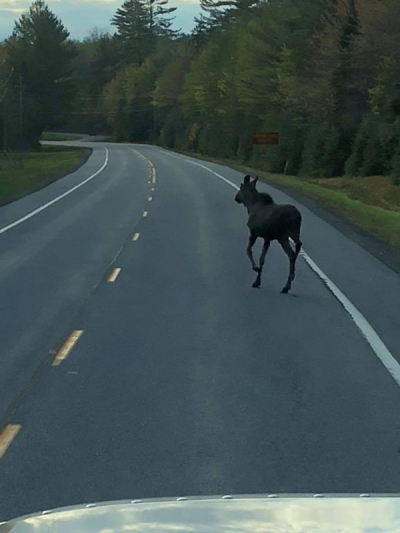
Driving Safety – Be aware that Moose, the largest members of the deer family, are most active in the hours around sunset to midnight and again around dawn. Moose have been known to hop over guardrails and cross the road when you least expect it, so just be attentive while traveling on our Adirondack Roads. While driving, just as you do with defensive driving for deer, scan both sides of the road as far as possible in front of you. Is there a passenger with you? He or she can also keep a lookout.
If you do happen to see a moose, don’t blast your horn or flash your lights to attempt to shoo the moose away. Your noise and lights may terrify the animal and it will could respond by darting into your way rather than out of it. Moose have been known to charge a stopped or moving cars of any size.
“Over the years there have been many documented cases of moose charging vehicles. Cars or trucks, moose don’t seem to be too particular. If the moose perceives a vehicle to be a rival or a threat they will charge. Oftentimes the moose charges, figures out the vehicle isn’t another moose and leaves.”
The New York State DEC website https://www.dec.ny.gov/animals/6964.html
Photo by Joan Collins of Adirondack Avian Expeditions
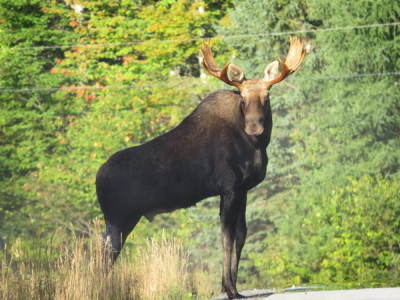

If you google things like “avoiding moose collisions” or “moose confrontation” plenty of articles show up. Lots of fun facts to read. One article stated that Moose are lazy herbivores and would rather eat than chase humans. So there’s that.
Please exercise common sense if you do encounter a moose. Moose can be aggressive and dangerous even when you are in your vehicle. Keep a safe distance.
“Moose on the Loose” by Alexandra Verner.
Alex has been the Director of Parks, Rec & Tourism for Long Lake since 2009. She’s seen one moose.
The above post was originally posted on May 29, 2018.


